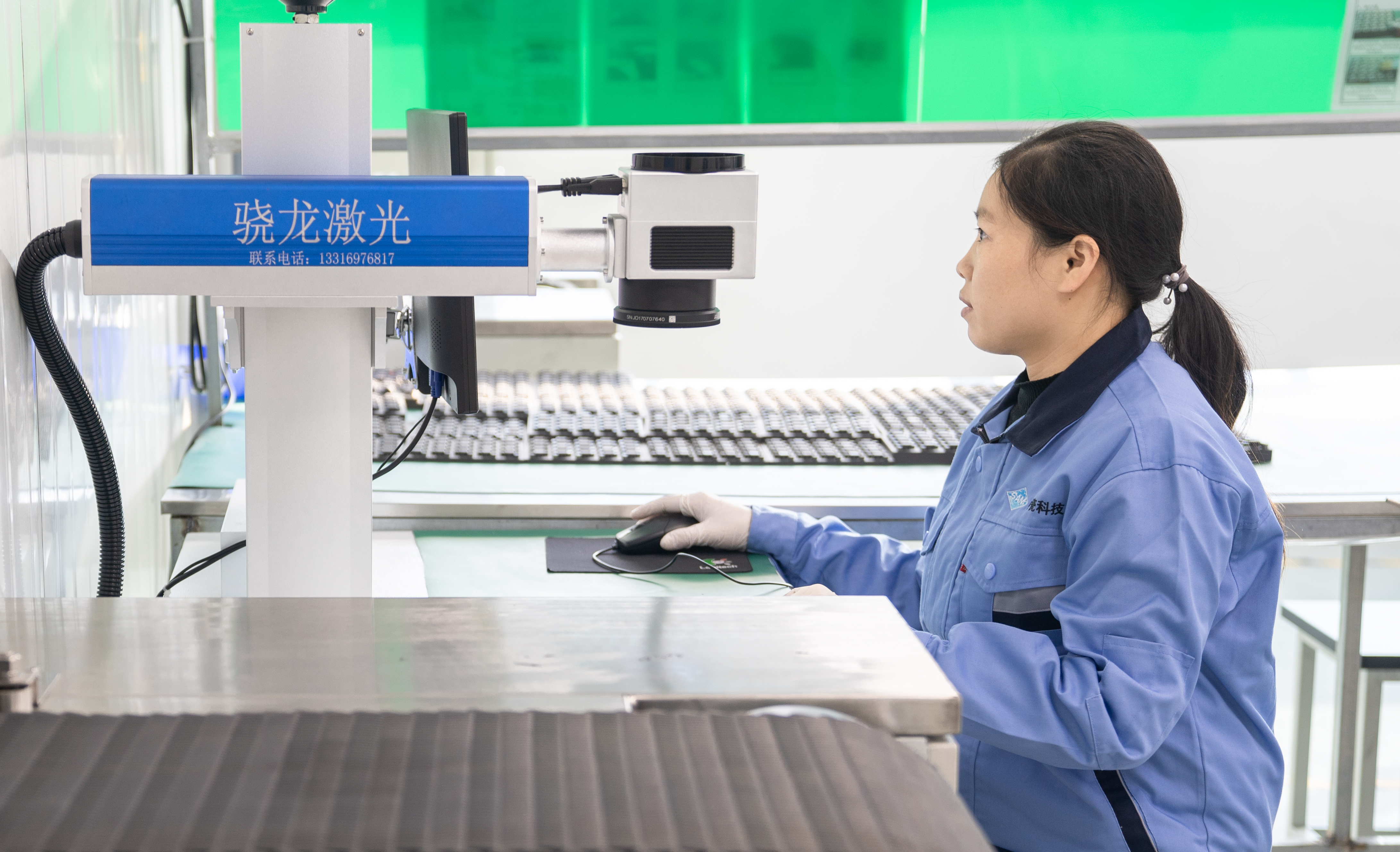Industrial Sealing Glass Powder Procurement Guide
Release time:2025-06-26
This blog comprehensive guide aims to simplify technical jargon, providing practical insights—including a five-step procurement framework, supplier evaluation checklist, real-world case studies, and expert negotiation tips for suppliers.
How to Purchase Industrial Sealing Glass Powder: A Procurement Guide
For buyers and technical teams in aerospace, electric vehicles, and electronics, choosing the right sealing glass powder boils down to one question: Does it meet the temperature, material, and reliability requirements of my application?
1. Start with Three Key Questions: Laying the Foundation for Success
Before diving into suppliers, clarify your project’s core needs. Treat these as "must-get-right" parameters that will dictate every subsequent decision.
Question 1: What is the operating temperature range?
Temperature is the primary factor determining glass type, as follows:
• Low Temperature Applications (-60°C to 200°C): Common in EV batteries, consumer electronics, and medical devices. The key is avoidin g thermal damage to sensitive components. Phosphate glass is ideal, with a sealing temperature below 380°C. For example, Sinopride(www.spcera.net)’s SP-75 series is designed to seal aluminum battery caps without overheating surrounding plastic parts.
• Medium Temperature Applications (200°C to 500°C): Found in automotive sensors, industrial machinery, and household appliances. Aluminoborate glass excels here, offering thermal stability across a wider range (420–480°C). It’s a top choice for military-grade applications due to its ability to withstand repeated thermal cycling.
• High Temperature Applications (>500°C): Aerospace engines, high-voltage transformers, and industrial furnaces. These extreme environments require custom glass-ceramic composites. Due to their specialized processing (resistant to melting and cracking), lead times are longer (45+ days) and costs higher.
Question 2: What materials are you sealing?
The golden rule of sealing: Match the glass powder’s coefficient of thermal expansion (CTE) to the substrate.
|
Substrate |
Thermal Expansion Coefficient (×10⁻⁶/K) |
Common Challenges |
Recommended Glass Type |
CTE Matching Range (×10⁻⁷/K) |
|
Aluminum Alloy |
23 |
Thermal expansion mismatch |
Phosphate Glass |
72–78 |
|
Kovar Alloy |
5.0 |
Low-temperature brittleness |
Aluminoborate Glass |
45–55 |
|
Copper |
17 |
High-temperature oxidation |
Lead-Zinc Borate Glass |
85–95 |
Expert Tip: Always request a sample testing checklist from suppliers. Sinopride provides test reports for thermal shock, leakage, adhesion, and more.
Question 3: What pressure or environmental stress can the seal withstand?
Seals aren’t just about temperature and materials—they must endure the "daily wear" of the application.
• Low Pressure: Suited for products like smartphones or home appliances. Standard civil-grade glass, such as lead-zinc borate glass, is cost-effective and widely used.
• High Pressure: Required for aerospace components that must maintain airtightness in vacuum conditions, such as hydraulic systems or deep-sea equipment.
• Corrosive Environments: In industries like chemical processing or marine engineering, glass powder must resist acids, salts, and other corrosive substances.
2. Supplier Evaluation: Must-Check Criteria for Shortlisted Suppliers
Now that you understand your needs, it’s time to evaluate suppliers. Use this checklist to distinguish contenders from pretenders.

1. Sample Testing Protocols: Test the Product
Without testing samples, assess the glass powder supplier’s capabilities through:
1. Thermal Shock Testing: Cycling samples between temperature ranges to check for cracks or delamination—any damage indicates poor CTE matching.
2. Leak Testing: Using helium mass spectrometry to measure leakage rates. For glass powder used in automotive and aerospace, target leakage rates are more stringent.
3. Adhesion Testing: Tensile tests to measure bond strength.
2. Supply Chain Transparency: Ensuring Reliability and Consistency
Supplier ability to deliver on time and maintain quality is critical. Consider:
• R&D Investment: With two major innovation R&D production centers in Shenzhen and Ganzhou, we maintain an R&D investment of no less than 7% of revenue annually and have obtained multiple patents and independent intellectual property rights related to "glass-metal sealing."
• Lead Time and Minimum Order Quantity (MOQ): Can they meet your deadlines? Does their MOQ fit your needs? Sinopride’s glass powder MOQ is 15 kg, with a delivery time of 1 week.
• Free Samples: Do they offer free samples? Sinopride does not charge for samples of standard products, while non-standard products incur a prototyping fee based on material and process complexity.
3. Price vs. Total Cost of Ownership (TCO): Avoid the Low-Cost Trap
Product price is important, but focus on TCO for these reasons:
• Low-Cost Suppliers: They may offer 15–25% lower prices, but hidden costs can accumulate:
◦ Inconsistent particle size can cause 20–30% yield loss in production.
◦ Lack of technical support means you’re on your own if issues arise.
• Sinopride’s Service Offerings:
◦ 7×24-hour online customer service, ensuring professional personnel address issues in real time without waiting.
◦ Led by two PhDs: Dr. Miao Xigen, R&D Director, Guest Professor at the Chinese Academy of Sciences, and Editor-in-Chief of three international academic journals; Dr. Shen Liang, Executive Vice President. Under the leadership of these top talents, the company’s implicit costs focus on professional accumulation and technical barriers. When choosing products, consider not only price but also the company’s costs in product quality control and human quality control to add multiple safeguards for customers.
3. Avoid These 2 Costly Mistakes: Lessons from Practice
Even experienced buyers make mistakes. Here’s how to avoid the most common pitfalls.
Mistake 1: Neglecting Particle Size Uniformity
Particle size directly impacts sealing quality:
• Too large (>20μm): Poor adhesion and uneven distribution lead to gaps and leaks.
• Too small (<3μm): Excessive dusting causes waste and equipment blockages.
Note: 20μm and 3μm are for specific fields; adjust as needed.
Mistake 2: Skipping Pre-Production Validation
Rushing into mass production without testing is a disaster. Conduct small-batch trials (50–100 units) to check:
• Uniform seal bead formation: Ensuring the glass melts evenly to form a consistent seal.
• Fluid resistance: Testing how the seal resists oils, solvents, or electrolytes used in the process.
4. Procurement Handbook: Negotiating with Suppliers
Once you’ve shortlisted suppliers, use these strategies to secure the best deal:
• Request Bundled Services: Negotiate free sample testing, technical support, or discounts for long-term contracts.
• Leverage Competition: Share quotes from other suppliers to encourage price matching—e.g., "Supplier X offers free parameter adjustment—can you match that?"
• Clarify After-Sales Terms: Ensure suppliers cover material defects and performance failures.
5. Download Free Procurement Toolkit
• Tool 1: Supplier RFP Template: A pre-written questionnaire to standardize supplier responses.
• Tool 2: Sample Testing Checklist: Thermal shock, leakage, and adhesion test reports.
6.Final Takeaway: Simplifying Procurement
Purchasing industrial sealing glass powder doesn’t require a materials science degree. Start by focusing on temperature, CTE, and environment, then evaluate suppliers’ certifications, samples, and track records—you’ll make confident decisions. Remember: A reliable supplier isn’t just a vendor; they’re a partner in your success.
Contact
Ready to start? Contact Sinopride(www.spcera.net) today for a free consultation and sample kit. Let’s find the perfect glass powder for your application.
Related content:
Common Failure Modes in Glass to Metal Seals
https://www.spcera.net/common-failure-modes-in-glass-to-metal-seal.html
A Quick-start Guide about Glass to Metal Hermetic Seal
https://www.spcera.net/a-quick-start-guide-about-glass-to-metal-hermetic-seal.html






